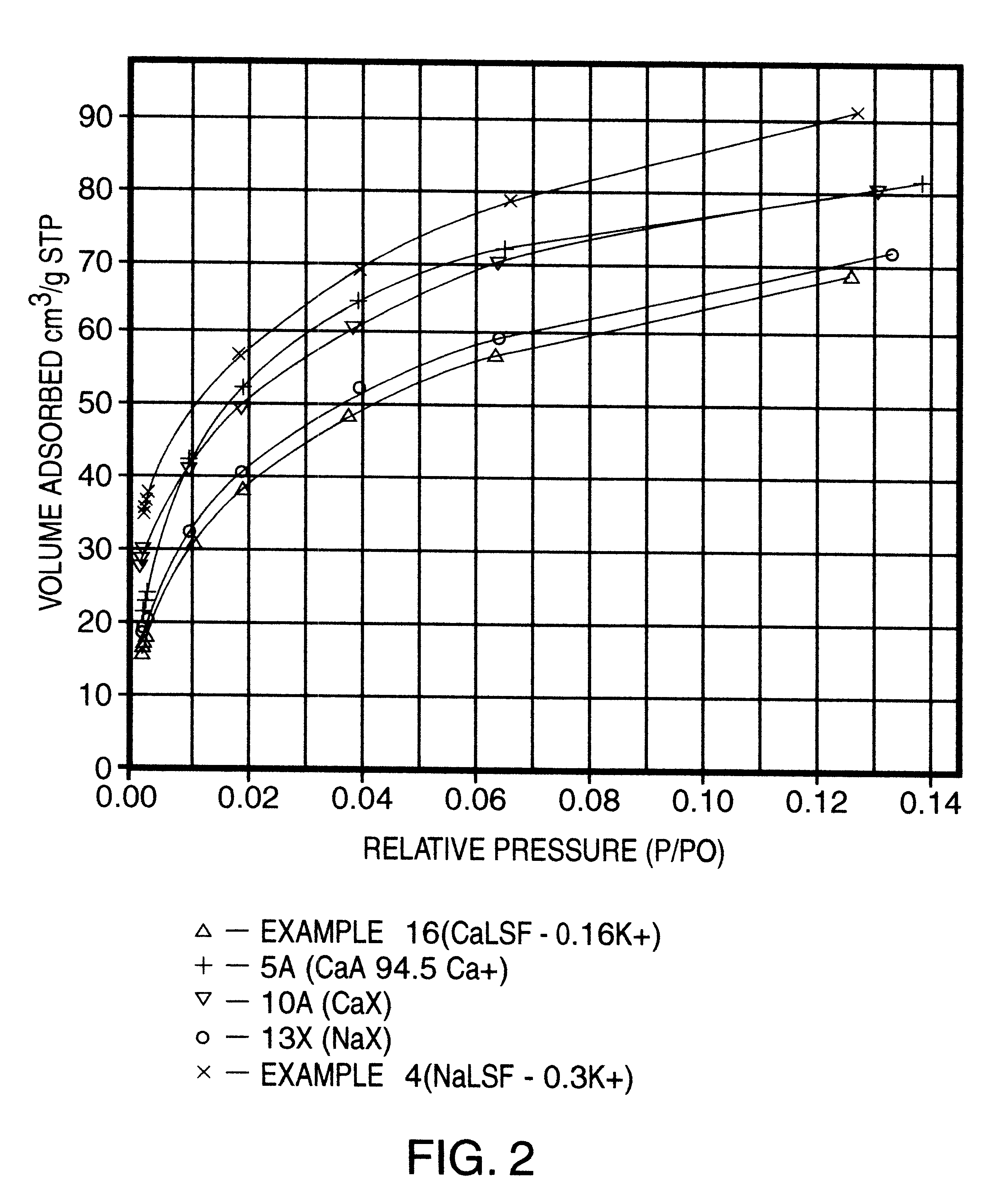Molecular sieve adsorbent for gas purification and preparation thereof
a technology of gas purification and adsorption capacity, which is applied in the direction of physical/chemical process catalysts, other chemical processes, separation processes, etc., can solve the problems of difficult or even impossible preparation of more complex adsorption solutions, unfavorable gas processing, operation, transportation and storage, etc., to enhance the adsorption capacity of the adsorbent, and reduce the resistance to superficial diffusion
- Summary
- Abstract
- Description
- Claims
- Application Information
AI Technical Summary
Benefits of technology
Problems solved by technology
Method used
Image
Examples
example 2 (
the Invention)
4.0 kg. of the sodium / potassium low silica faujasite beads obtained from Example 1 were treated at ambient temperature with 16 liters of a 1.5N solution of sodium chloride. The product was washed with 80 l of deionized water and then again treated with 8 liters of 2.2N solution of sodium chloride. The product was then washed with deionized water to remove the chloride ions until a negative measurement with a 0.028N solution of silver nitrate. Then the operating procedure of the Example 1 for the adsorbent drying and calcining was repeated. Elemental analysis of the resulting product showed a 7.5 percent (Equiv.) residual potassium ion content. The analysis was done by Inductively Coupled Plasma Atomic Emission Spectroscopy.
example 3 (
the Invention)
2.3 kg. of the beads produced from Example 2 were treated under ion exchange conditions with 8 liters of a 3.0N solution of sodium chloride at ambient temperature. The product obtained was washed with deionized water as it is shown in Example 2. Then the operating procedure of the Example 1 for drying and calcining was repeated. The product produced from this exchange operation was analyzed for potassium and determined to have a potassium content of 2.4 percent (equiv.).
example 4 (
the Invention)
1.0 kg. of the beads prepared in Example 3 were treated at a temperature of 80.degree. C. with 2 liters of 3.0N solution of sodium chloride. The operating procedure of Example 2 for the adsorbent washing, drying and calcining was repeated. The residual content of the potassium ion in the adsorbent was 0.3 percent (equiv.).
PUM
| Property | Measurement | Unit |
|---|---|---|
| Fraction | aaaaa | aaaaa |
| Fraction | aaaaa | aaaaa |
| Fraction | aaaaa | aaaaa |
Abstract
Description
Claims
Application Information
 Login to View More
Login to View More - R&D
- Intellectual Property
- Life Sciences
- Materials
- Tech Scout
- Unparalleled Data Quality
- Higher Quality Content
- 60% Fewer Hallucinations
Browse by: Latest US Patents, China's latest patents, Technical Efficacy Thesaurus, Application Domain, Technology Topic, Popular Technical Reports.
© 2025 PatSnap. All rights reserved.Legal|Privacy policy|Modern Slavery Act Transparency Statement|Sitemap|About US| Contact US: help@patsnap.com


